A little change in scenery, is sometimes healthy for the mind.
The movement of color in a live reef is almost hypnotic & usually captures the mind,
freeing it from the binding chains, we live with on a daily basis. That’s why so many people actually have at home aquariums where they can recreate some sort of tranquility. Of course, they’d need to read the coral PAR guide before setting up their tank but once the tank is sorted, a variety of fish can be added.
I hope you enjoy my attempt to distract you.
BLUE TANG
This beauty is one of my fish that knows me quite well.
As you can see, the closest one would normally get to a fish would be a dead one.
This one is very much alive, & I`m only separated from it by glass & less than one inch of water.
Emerald Zooas
(3/8`s inch dia.) with surrounding red polychaetes
Calloplesiops altivelis
(Steindachner, 1903)
Commonly called a Comet,or Marine Betta
I`ve had this beauty for many years.
It`s about 6″ longhas a maximum length of 8 ” & is from the Indo Pacific
Emerald Crab
I have three or four in this reef. They are part of the “cleaning crew”,
a critical group of scavengers on a living reef reef.
You can see the scraped areas in white, where the crab has cleaned away algae.
Synchiropus splendidus
(Herre, 1927)
Green Mandarinfish
These fish eat only live organisms on the reef surfaces, & moves about the reef nonstop, pecking away at things mostly too small to see.
It must be introduced only to a well established reef to prevent it from starvation.
A lovely fish, that is not bothered by any others, due to the noxious slime it exudes,
It may very well be eaten by an anemone.
Amphiprion ocellaris
(Cuvier,1830)
Ocellaris , False Percula
This one, familiarizing itself with a Torch Coral, by sucking on it`s elongated body parts, is usually found paired with an anemone.
It will though, choose any number of different coral heads to call home, & will sleep at that location every night.
Istiblennius chrysospilos (Bleeher,1857)
Redspotted Blenny
This one is a little shy in this new reef, but can always be found peeking about to see what is going on.
Purple Snowflake
(Knucklehead 2009)
I obviously just made up the name for this colony.
As you can see in this image, there is a “mouth” in every circular formation.
The little white dots around the inside of the rims, will extend at night to feed, making the whole coral head look like a dandelion.
Pistol Shrimp
I`ve had this one for years.
It comes out at feeding time & at night, when most of the main reef inhabitants are snoozing.

Homer Simpson Blenny
Ocellaris
This one is the same fish as above, but it is now making friends by sucking on this Leather Toadstool`s polyps.
Tomato Clownfish
This clownfish may belong to a different species but I`ll stick with Tomato.
Here it is in it`s buddy, a Purple Anemone.



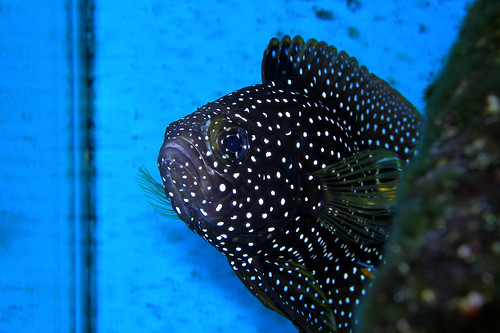
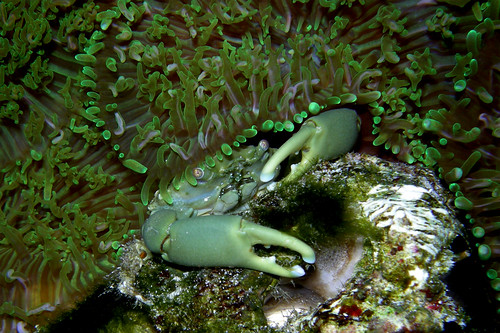
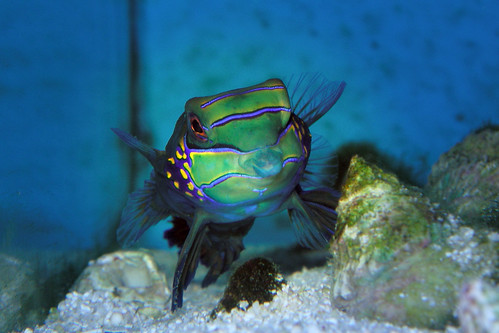

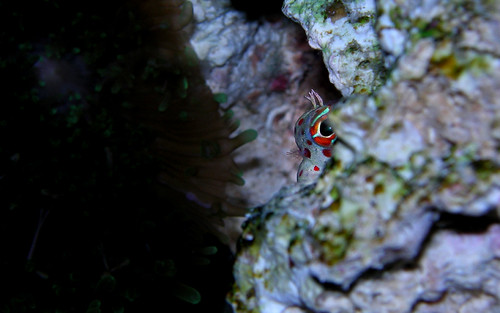

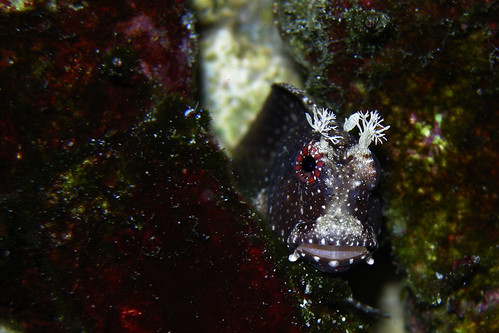
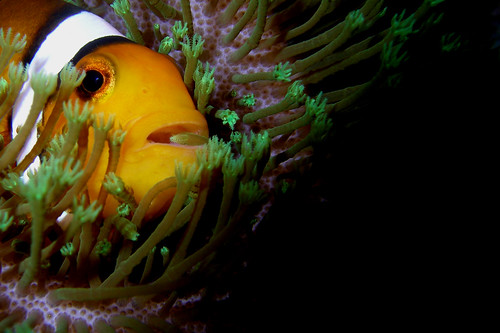
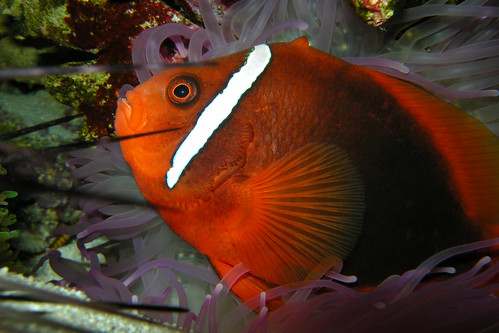
29 comments
Skip to comment form
KH, but these are just too gorgeous…Thank You!
You say “your” reef–I take it you have an enormous marine aquarium?
I used to dive around San Clemente Island and the Channel Islands off of Santa Barbara. A freind, Flippy Hoffman (aka: the King of San Clemente Island), did a lot of underwater photography. It was great. just remembering. Thanks. Especially love the Emerald Zooas; they’re new to me.
Author
I just took this shot of the “snowflake” a few minutes ago.
You can see that the tentacles are now out picking up food drifting by in the water column.
Dandelion
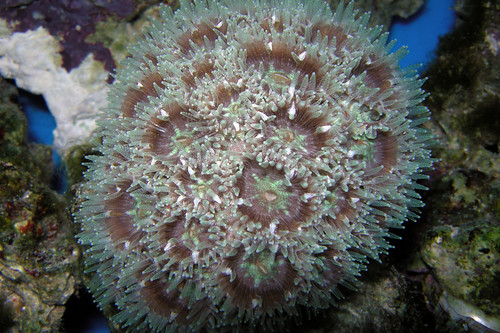
Author
Here`s a wake-up embrace for anybody who needs one/ or just enjoys them anytime.
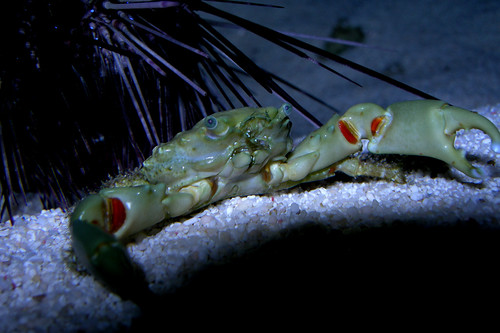
Feels like I’m right there gazing into the tank and viewing all the “life” close up! Such a beautiful array of color and arrangement. So nice!
Thank you, Knucklehead!